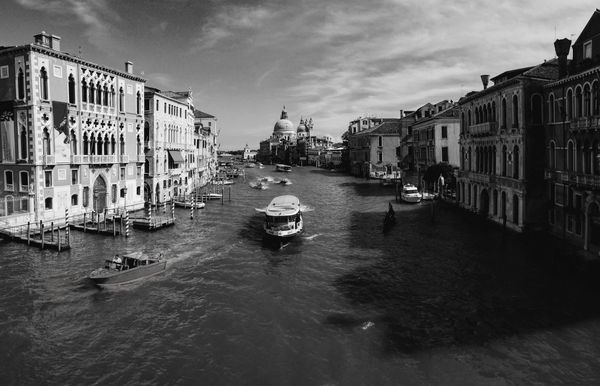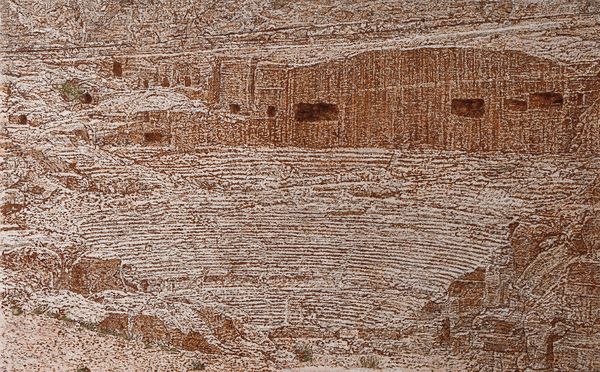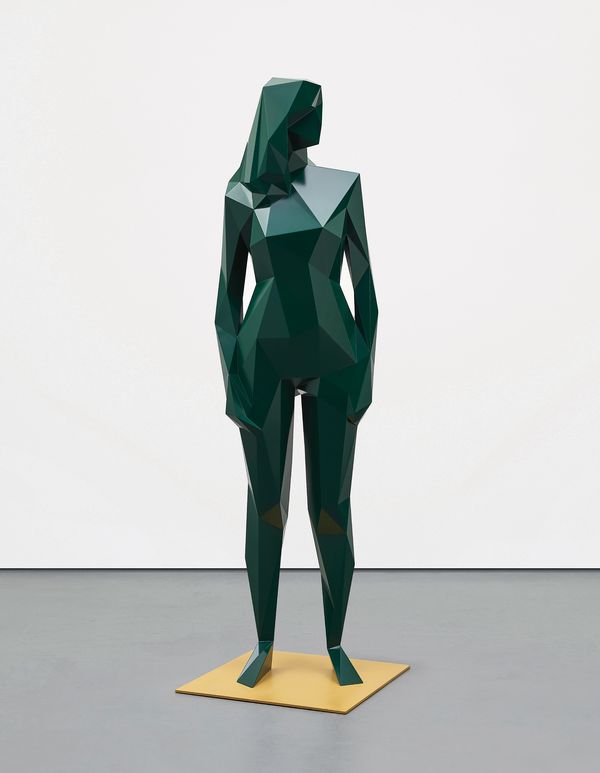View of the canal, Venice © Photo: Kos Hermndy-Berencz / EyeEm, 2017
In its 57th year and offering work from 120 artists worldwide, the Venice Biennale is arguably the most progressive event in the contemporary art calendar. With Viva Arte Viva as its resounding theme, Christine Macel, chief curator at Paris' Pompidou Centre, curates the 2017 Biennale.
As part of our June Day Sale in London, we are pleased to present a selection of artists chosen to represent their countries in Venice. Although geographically distant – France, Israel, Switzerland and the United States – works by Xavier Veilhan, Gal Weinstein, Carol Bove and Mark Bradford are thematically linked, signifying a poignant reflection of our contemporary world.
Mark Bradford Untitled, 2002
Examining the city as a social laboratory of everyday practice, Bradford's Tomorrow is Another Day utilizes urban detritus, offering a decaying mural, gritty collages and fragmented images to communicate his concerns for the marginalized, encompassing both their vulnerability and resiliency to the unfulfilled American promise. Similarly, Bradford's Untitled, 2002, offers a celestial Minimalist grid recalling the energetic and often frenzied topography of the Los Angeles cityscape. This work delicately conveys a panoramic and ethereal landscape that further reveals the temporary condition of materials – the ephemerality of urban life.
Says Bradford, "I'm pulling back a lot with color in general, because at the moment I'm very interested in the relationship to line, the relationship to shape – very formal things. I'm very interested in looking at structure right now instead of color."
Gal Weinstein Petra, 2014
Further exploring the relationship between art and reality, the Israeli Pavilion, Sun Stand Still by artist Gal Weinstein and curator Tami Katz-Freiman, critically addresses contemporary Isreali politics while examining mythological and romantic images embedded in Israel's collective memory. This very notion is echoed in Petra, 2011, which masterfully conveys the historical and archaeological city of Petra from wool and plywood.
Says Weinstein, "I find inspiration in iconic images, I choose them because they have already lost their concrete experience and we experience them as a nostalgic memory, I like to recreate them physically to allow you to feel them again. I'm also inspired by carpet shops, routine life, humor and everyday materials."
Carol Bove Ars Moriendo, 2004
Carol Bove's Women in Venice delves into the political history of the Venice Biennale. The title of the exhibition alongside the royal blue cubist sculptures explicitly reference Alberto Giacometti, who continually declined the invitation to represent Switzerland at the Biennale. He instead considered himself to be an international artist. Furthermore, the sculptures relate to the physicality and materiality of Giacometti's creative output. In keeping with this profound connection to Modernism, Ars Moriendo, 2004, aesthetically recalls the work of John Chamberlain, Tony Smith, Alexander Liberman and Anthony Caro while espousing a contemporary and feminine aesthetic.
Xavier Veilhan Debora, 2011
In the same way, French artist Xavier Veilhan situates people and relationships at the core of his oeuvre. His exhibition at the Biennale, Studio Venezia, offers a fully functioning recording studio that invites professional musicians to collaborate, experiment and document. The studio reflects a comparable aesthetic to Debora, an abstract geometric female nude executed in 2001. With an inherently formalist preoccupation with materiality and form, Debora espouses a social commentary on perception, interaction and engagement in the digital age.
She is a futuristic and post-human female nude. Stripped of superfluous detail, her stance is powerful, her poise elegant. Conveying strength, sensuality and grace, the exquisite sculpture, cast in resin and painted emerald green, empowers the female body while evocatively mimicking the aesthetic of digitally rendered images. As such, Debora critically addresses the ways in which digital technologies and the post-Internet age have altered our perception of the world.
The form of Veilhan's multifaceted sculpture is reminiscent of Gerhard Richter's Ema (Nude on a Staircase), 1966 – a painting Richter made of his beloved wife; a painting of love and adoration. In a similar vein, Veilhan turns to friends and family as subjects for his sculptures, thus achieving a deeper engagement with his sitters. Furthermore Debora is indicative of German figurative sculpture of the 1980s, namely the masterful work of Georg Baselitz and Stephan Balkenhol.
Over his extensive career, Veilhan's work has been exhibited at the Barbican, the Centre Pomidou and Versailles. His Studio Venzia from this year's Venice Biennale continues to position people, teamwork and collaboration at the heart of his creative output.




